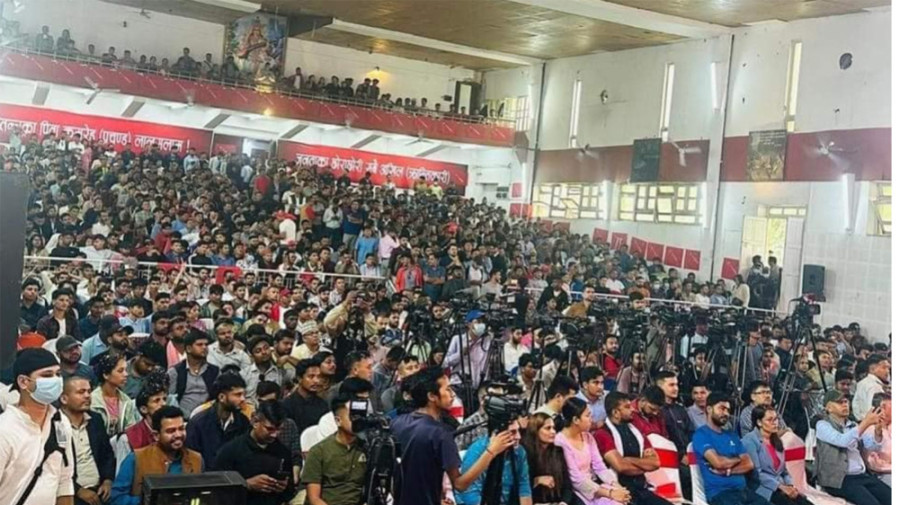Editorial
Outdated unions
Student wings of political parties are perfect reflections of the anomalies of their mother parties.
The shambolic 23rd general convention of the ANNISU (Revolutionary), the CPN (Maoist Centre) student wing, epitomises all that is wrong with student politics today. The convention had to be suspended last Wednesday after physical violence broke out on the convention floor, apparently over the failure to arrive at a consensus on the pick of certain delegates. That at least was the stated reason. The hard truth is that for antics like these, the ANNISU (Revolutionary), just like the student wings of other parties, is now battling irrelevance.
During the Panchayat era (1962-1990), as the political parties were banned, these student bodies played a vital role in keeping alive political consciousness. They were also at the vanguard of most recent revolutions, including in 1990 and 2006. Alas, they have lost their way. To get back to the ANNISU (Revolutionary) in particular, its leadership has never been democratically elected, just as is the case with the leadership of Maoist Centre, its mother party. This is because the student wing could not function independently of the mother party and, to be more specific, its leadership had no vision beyond doing the bidding of Maoist Centre chief Pushpa Kamal Dahal. Pretty much the same problem afflicts the Nepal Student Union (the Congress student wing) and the ANNFSU (the UML). Top student leaders have lost their self identity.
Most of the top post-1990 political leaders rose through the ranks of student politics, cutting their teeth during the days of the autocratic monarchy. They had a common purpose and a common enemy. But then student politics slowly started losing its way, a trend that accelerated after the 2006 revolution. These days, it is hard to see what these organisations are good for except acting as the stooges of their top political masters. Seldom do they speak up against the anomalies in academia, nor do big disasters concern them. Moreover, the ranks of the youth with leadership potential who are willing to join these student wings have significantly dwindled. The rise of forces like the Rastriya Swatantra Party and independent candidates like Balendra Shah has shown that politicians need not emerge from student politics, that the youth can make a lateral entry. Thus the allure of these organisations as the stepping stones to mainstream politics has gone down.
In order for them to be relevant they must capture the spirit of the youth and raise their issues. For instance, how many AI workshops have these student wings organised, and how many debates on developing the kind of graduates needed for today’s job markets? What is their input on the kind of education system the country needs? How does Nepal raise its education standards so that at least some Nepali youth can be convinced to study in their own country? How do we keep our top education institutions like Tribhuvan University and Kathmandu University going as student and faculty numbers dwindle? The student bodies have answers to none of these vital questions. Instead, they are busy trading fisticuffs. If these are our future political leaders, frankly, we don’t need them.




 17.12°C Kathmandu
17.12°C Kathmandu














